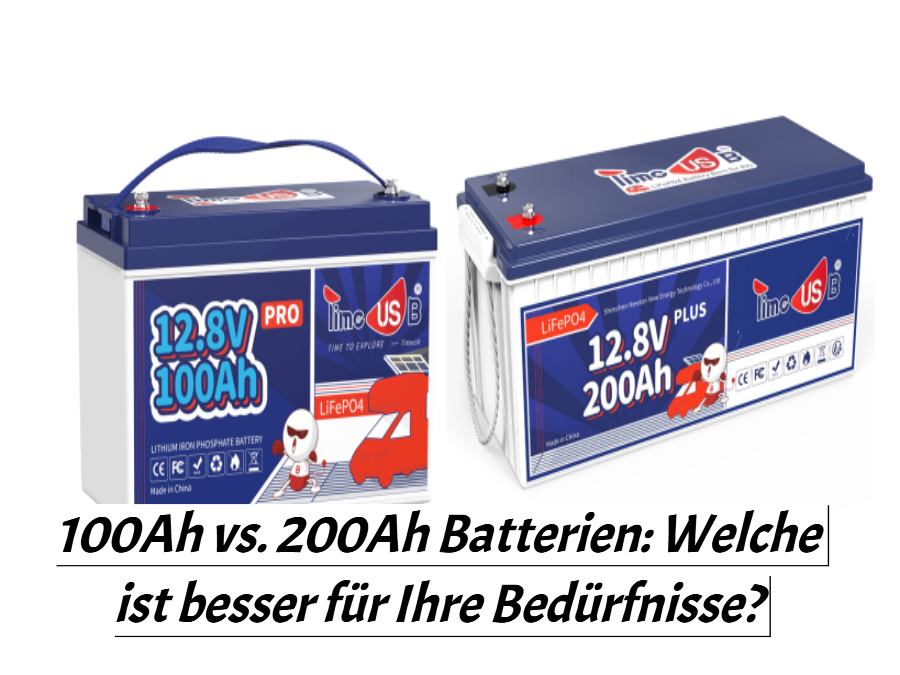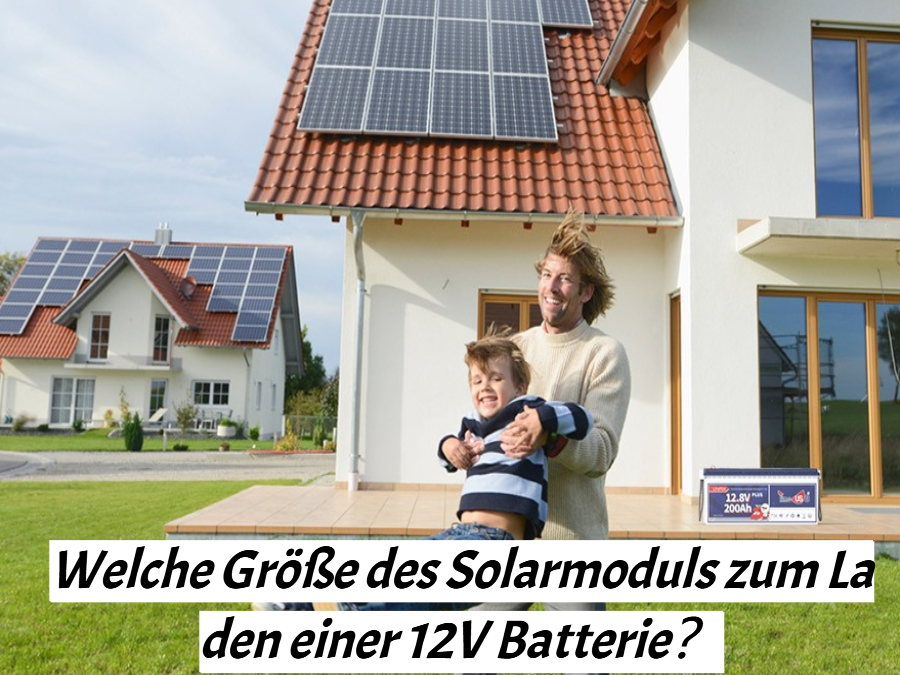[Latest] How to configure a set of home energy storage?
![[Neuest] Wie man einen Satz Energiespeicher für zu Hause konfiguriert?](http://timeusbpower.de/cdn/shop/articles/LiFePO4_Akku_Timeusb_Lithiumbatterie_Solarbatterie_Solar_Akku_12V_LiFePO4_24V_Lithium_Solarbatterie.jpg?v=1710149121&width=1600)
As the world becomes increasingly dependent on technology, power outages can be a major inconvenience. A home backup battery is an effective solution to ensure you never lose power, no matter what the circumstances. In this article, we will discuss the benefits of a home backup battery and how to choose the right one for your needs.
Home battery storage devices are designed to store electrical energy and use it when needed - also known as electrical energy storage products or "battery energy storage system" (BESS). The core component of home storage is rechargeable batteries, mostly lithium-ion batteries or lead-acid batteries. Acid battery. The other components are inverters, which can intelligently control the control system for charging and discharging.
Part 1. The benefits of a backup battery
1.1 Ensuring an uninterrupted power supply:
Using a backup battery ensures that your devices and equipment remain powered even during power outages. This is especially important for critical systems such as medical devices, security systems and communications equipment.
1.2 Protection against overvoltage:
A backup battery can also protect your devices from power surges that can damage sensitive electronics. The battery acts as a buffer, absorbing the excess voltage and preventing it from reaching your devices.
1.3 Comfort and portability:
Backup batteries are typically portable and can be easily taken anywhere, making them a convenient option for powering devices on the go, such as during camping trips, long commutes, or outdoor events.
1.4 Save money:
In some cases, having a backup battery can save you money in the long run. For example, having a solar-powered backup battery can help you reduce your electricity bills by using free, renewable energy to power your appliances.
1.5 Environmentally friendly:
Using a backup battery can also be an environmentally friendly option as it reduces your dependence on non-renewable energy sources and helps reduce your carbon footprint.
Part 2. What you need to know before preparing a battery storage system for your home

In the home energy storage system, the main components are solar panels, energy storage machines and batteries. The form shown in the figure above is to set up the energy storage in the garage for use by our electric vehicles.
Energy storage systems are divided into single-phase and three-phase systems. The picture below is a simple diagram of an energy storage system. In addition to the three main components, it also includes electricity meters, household loads, etc. Whether single-phase or three-phase, there are corresponding solutions.

2.1 Single-phase and three-phase current
Electrical power is the rate at which electrical energy is transmitted or used. It is usually expressed in watts (W) or kilowatts (kW). Single-phase and three-phase power are the different methods of distributing electrical energy.
Single-phase current is a single alternating current (AC) waveform flowing through a single conductor.It is often used in homes and small businesses where the demand for electrical energy is low. Single-phase power is also called single-phase power.

Three-phase power, on the other hand, is a type of polyphase power that uses three alternating current waveforms that are 120 degrees out of phase with each other. It is often used in industrial and commercial applications where the demand for electrical power is high. Three-phase power is also more efficient than single-phase power because it allows for a more balanced load distribution.

To summarize, single-phase current is a single AC waveform flowing through a single conductor, while three-phase current is a type of multiphase current that uses three AC waveforms that are 120 degrees out of phase with each other.
2.2 Energy storage battery (LiFePO4 vs. lead-acid battery)
It is recommended to use lithium batteries as the battery. Lithium batteries are made of lithium metal or lithium alloy as the negative electrode material and use non-aqueous electrolyte solutions. They have many advantages such as high energy, long life and light weight. They are widely used in energy storage systems such as hydroelectric power stations, thermal power stations, wind power stations and solar power stations, etc.
| battery type | lead-acid battery | LiFePO4 battery |
| energy density | Low | 3 times higher than LA |
| internal resistance and self-discharge | High | Low |
| energy discharge rate | 30%-40% | 80%-90% |
| temperature tolerance | low | High |
| Security | Low (presence of toxic substances) | Excellent (no risk of fire/explosion) |
| life | 400 (usually takes between 3 and 5 years) | 2000 (up to 10 years or more) |

Self-discharge comparison between LiFePO4 and LA batteries

Temperature tolerance comparison between LiFePO4 and LA batteries
LFP example products:
LFP-100: Timeusb 12V 100Ah per LiFePO4 battery
LFP-50: Timeusb 12V LiFePO4 50Ah per battery
2.3 Working modes
Mode 1. Load consumption priority: PV – battery – grid

- The electricity generated by photovoltaics is supplied to the load on a priority basis, the excess electricity is stored in the battery, and the excess electricity is sold to the grid; when PV is insufficient, the battery is discharged for use by the load.
- When the power grid fails, the load at the grid-connected output end cannot work; however, the load at the off-grid output end can work normally and be powered by PV and battery.
Mode 2settings for the power saving mode

Note: In general mode, the power grid does not charge the battery. When the saving mode is set, you can set the period for charging and discharging the battery.
The main function of economy mode is to smooth peaks and fill valleys. It can use the grid's power to charge the battery during the evening low and use it for the load during the day's peak. This mode can reduce the difference between peaks and valleys, thereby saving electricity costs.
Part 3. How to configure battery capacity?
When selecting the battery, the load should be considered, whether it is used daily or as a backup. If the battery capacity is too large, it will be wasteful, and if the stored power is used up, the battery will not be fully charged.
So what is the quickest and most direct way to select the best battery capacity solution in the household energy storage scenario?
Currently, most households use energy storage to adjust the use of grid electricity, which we commonly refer to as grid-tied energy storage. For grid-tied energy storage, the main purposes can generally be divided into three categories: photovoltaic self-use (higher electricity costs or no subsidies), peak and valley electricity prices, and emergency power (grid instability or important loads).
3.1 Increase the self-consumption rate of photovoltaics
The main purpose of this scenario is to install a photovoltaic energy storage system to reduce electricity bills when the electricity price is high or the grid-connected photovoltaic subsidy is low (no subsidy), so that the remaining power of the photovoltaic system except during the daytime use can be stored and stored when used at night.
We divide household electricity consumption into daytime electricity consumption (periods with high photovoltaic power generation) and nighttime electricity consumption (periods with low or no photovoltaic power generation). According to the above purpose, the ideal state should be that the electricity generated by photovoltaics can meet the electricity consumption during the day and can just meet the electricity consumption at night after storage.
That is, the effective capacity of the battery should be approximately equal to the photovoltaic power generation minus the daytime power consumption. But this is only an ideal state. In addition, in order to avoid battery capacity redundancy (to avoid depletion at night), we must ensure that the effective power of the battery does not exceed the power consumption at night.
This requires a more detailed understanding of the laws of household electricity consumption and knowledge of the rules for determining the priority level of electricity supply in the energy storage system.
A family is equipped with a 5kW photovoltaic system, the daily power generation is about 17.5kWh. The average daily power consumption of a household is about 20kWh, of which the average daily power consumption is 5kWh during the day and 15kWh at night. Then the effective power of the battery should be about 17.5-5=12.5kWh, and this also meets the condition of not exceeding the nighttime power consumption (12.5kWh≤15kWh). Therefore, the best available battery for this family is 12.5kWh.
3.2 Trim peaks and fill valleys to reduce electricity bills
The main purpose of this scenario is to charge the battery during the day when electricity prices are low and discharge it at night when electricity prices are peak, thus reducing the overall electricity bill.
We divide household electricity consumption into daytime electricity consumption (period with low electricity prices) and nighttime electricity consumption (period with the highest electricity prices). In this scenario, the ideal state is to "use the remaining power after photovoltaic power supply to the load and the grid to charge the battery during the day, and the battery power is just enough to be used at night (when the electricity price peaks)".
This means that the effective capacity of the battery is roughly equivalent to the family's electricity consumption at night. However, the battery capacity calculated based on nighttime electricity consumption is only a maximum requirement value.
When it comes to battery costs, it is fundamentally necessary to consider the three levels of photovoltaic system capacity, battery investment and electricity price savings in order to determine an optimal ratio. At the same time, it must be ensured that the battery discharge time is not longer than the night-time electricity consumption.
A family with a 5 kW photovoltaic system installed has an average daily electricity consumption of about 20 kWh, and at night (assuming that the electricity price peak and trough times are from 5:00 p.m. to 10:00 p.m. for a total of 5 hours) the electricity consumption is 15 kWh. Assuming that according to the calculation, the effective capacity of the battery covers 2/3 of the family's nighttime electricity consumption, this is the best investment return point.
Then the effective power of the battery should be about 15*2/3=10kWh. At this time, the battery capacity is about 10 kWh/5 kW = 2 hours, which is less than or equal to 5 hours of nighttime power consumption. Therefore, the best available battery for this family is 10 kWh.
3.3 As a backup power source in areas with unstable power grids
When the energy storage system is used as a backup power source, it is mainly used in areas with unstable power grids or high-load situations. For example, the family's basic lighting, refrigerators, desktop computers, etc.; the data room of the commercial area, the important equipment of the industrial area, the lighting and ventilation equipment of the breeding area, etc.
When designing battery capacity with backup power as the primary purpose, the main consideration is that the battery can supply the power required by the critical load alone when the battery is disconnected from the grid for the longest time (the longest expected power outage time), including the need to consider the case of no PV at night.
In this scenario, battery capacity is relatively easy to calculate. To first determine battery capacity, all you need to do is list all the major loads and calculate the power consumption of all loads during the longest power outage.
Taking an important commercial site as an example, the important load is 10 cabinets in the data center, and the power consumption of each cabinet is 3kW. The expected maximum downtime is about 4 hours. According to calculations, the effective battery capacity of this project should be 10*3kW*4h=120kWh.Therefore, the effective battery capacity for this industrial and commercial project is best equipped with 120 kWh.
The above three situations are the most common requirements for the installation of grid-connected energy storage systems, and there are rules to be followed when selecting battery capacity. However, in practical applications, two or more requirements may overlap, which requires a detailed analysis of the requirements and finally determine the most suitable capacity of the battery.
In addition, in the above analysis, we mentioned the effective performance of the battery, but the actual selection of the battery also needs to consider the shock load of the load, the DOD (depth of discharge) of the battery, the loss of system efficiency, the performance of the energy storage system and the expected return on investment. And many other situations.
Therefore, when selecting battery capacity, it is necessary to consider the performance of the whole family or usage scenarios as a whole system, and it is also particularly important to select the best equipment and system integration suppliers.
Frequently asked questions about energy storage for private households
1. Does an accumulator work without solar modules?
A storage battery can also function without PV modules, but this is only possible if an alternative charging method is available.
2. Can you add solar panels to your battery later?
If your home backup battery or portable power station can be charged with solar energy, you can add solar panels at a later date. These power stations can usually be purchased individually or as a package of photovoltaic (PV) panels. In addition, you can use different types of panels for different scenarios by combining rigid PV panels on your roof with portable panels for outdoor activities. Due to the universal design, all of these panels can be connected to the same battery.
Conclusion
A backup battery is a worthwhile investment for any homeowner who wants to ensure a reliable power supply even in the event of a power outage. With the benefits of saving money, reducing your carbon footprint, and providing a reliable power source, it's no wonder that home backup batteries are becoming increasingly popular.
This article will introduce different ways to prepare your own power storage system. Hope it would help you.




